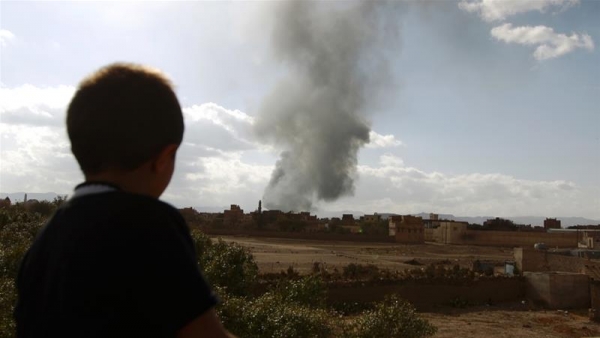Since late 2014, Yemen has been locked in a bloody war between Houthi rebels and the Government forces. The devastating effects of this war on civilians have been widely documented and denounced by the international community. However, after more than 100 000 deaths and millions on the brink of famine, the momentum toward peace is growing and there is hope the conflict may soon come to an end as the number of attacks is plummeting.
Last year has seen significant de-escalation of the conflict. The Hudaydah Agreement, signed in December 2018, has ensured a maintenance of a fragile ceasefire. Moreover, the Agreement was followed by a reduction in the number of airstrikes across Yemen, the release of detainees on both sides and increased access to the vital ports. Although the Agreement halted the worsening of the humanitarian crisis, there have been increasing restrictions on the UN Mission to Support the Hudaydah Agreement (UNMHA) due to increased difficulty in conducting day-to-day operations of the mission and a concern about the mission’s ability to achieve its mandate.
Despite some setbacks, last week, the UN Security Council was informed that compromises have been made on both sides to promote an orderly and peaceful transition process. Another part of concerted efforts to achieve sustainable peace was the signing of the Riyadh Agreement between the Southern Transitional Council and the Government. The Agreement, signed in early November 2019, brought increased stability to the south of the country. Both agreements demonstrate willingness of the main actors in this conflict to reach a political settlement.
Further hope for Yemeni civilians has come with the announcement of a 20 per cent increase in funding for the United Nation’s Humanitarian response. The Humanitarian response is the largest in the world, with 250 humanitarian partners working with the UN to assist over 13 million people across the country. However, Yemeni civilians still face considerable challenges. The humanitarian situation remains dire, with the Red Cross reporting a significant increase in cases of Dengue fever and malaria since 2018. Furthermore, over 56 000 cases of cholera were reported this year alone. Additionally, the country remains on the brink of famine and 75 per cent of the population is expected to be living in poverty by the end of 2019.
The UN Special Envoy to Yemen has stressed that complex challenges still remain, as both sides of the conflict are yet to reach an agreement on the processes of rebuilding society as well as conducting political transition and economic reconstruction. Although the existent agreements are a cause for optimism, there is still a long way to go to achieve peace and address development and humanitarian crises in Yemen.
Further reading:
https://news.un.org/en/story/2019/11/1052001
https://www.aljazeera.com/news/2019/11/saudi-led-coalition-air-attacks-yemen-80-percent-191122174301451.html
https://www.washingtonpost.com/world/middle_east/red-cross-reports-new-outbreak-of-dengue-fever-in-yemen/2019/11/25/a0a0e140-0fdd-11ea-924c-b34d09bbc948_story.html
https://www.aljazeera.com/news/2019/10/yemen-world-poorest-country-war-continues-191010112703109.html
Signs of Hopes for Yemen
 Momentum for peace builds in Yemen, as the number of airstrikes has decreased by 80% in the last two weeks
© Mohammed Huwais/AFP
Momentum for peace builds in Yemen, as the number of airstrikes has decreased by 80% in the last two weeks
© Mohammed Huwais/AFP
25-29 November 2019 weekly digest, by Phoebe Ohlin
Category:
In Focus
2016 Copyright L'Osservatorio. All rights reserved
Website by www.sitiwebegrafica.it






